
Maybe because of tradition, or because of its huge media...

In real life, it sometimes happens that the deepest lessons...

Rents increase 9% due to competitive pressure and reach 3,000...

Banco Sabadell, with the collaboration of the University of Barcelona,...
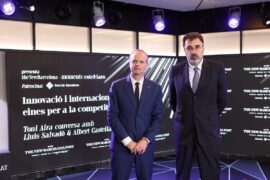
The CEO of Acció, Albert Castellanos, and the president of...

CosmoCaixa commemorates the half century of the arrival to the...

On October 28th at 3 o'clock a.m. we rewinded the...
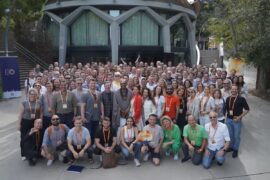
Entrepreneurs' Organization promotes entrepreneurship in community and from a holistic...

The Barcelona-based production company Canada has been successful for ten...

We are beginning to take in that it is possible...

Música clásica sobre la arena de la playa en dos...
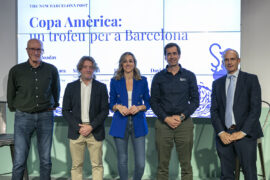
The first session of the cycle on the regatta organized...

The hospital's managing director, Manel del Castillo, and the pharmaceutical...

Generalitat y Ayuntamiento impulsarán dos equipamientos de 'Casa de les...
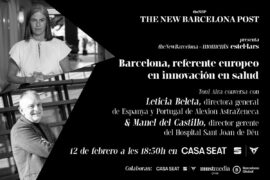
Leticia Beleta, director of Alexion Pharmaceuticals in Spain and Portugal,...

We all have a friend who never leaves the Gràcia...
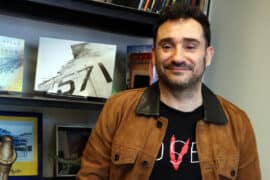
Barcelona director opts for Best International Film with 'La sociedad...

The hotel and industrial sectors softened the market's decline last...
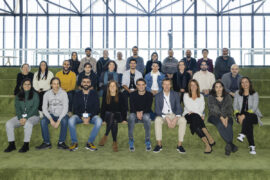
The technology company, with a workforce of 35 employees and...

“The women of yesteryear were strong and had to fight...
[dropcap letter=”A”]
As we speak, the second quantum revolution is underway in scientific labs of the developed world. This ongoing long-term strategy will eventually make an impact on important communication and supercomputation areas and, in turn, those economic sectors that rely heavily on them. The first products of this revolution will appear in the field of cybersecurity, ultraprecise sensors, image techniques and metrology. On the other hand, the field of computation will soon bear witness to the so-called quantum supremacy: in other words, a machine based on dozens of quantum elements will carry out an operation that none of the current traditional machines has had the capacity to carry out. At this point, there will still exist formidable challenges to overcome before a human being succeeds in creating a machine capable of carrying out practical computations that now require thousands of elements. And the term “revolution” is not a misnomer, as there will be a change of model, of paradigm in implementing the most private parts of the quantum laws, in other words, those that facilitate “Schrödinger’s cat”, whereby matter is a simultaneous superposition of multiple states, or the realization of information –not yet matter– teleportation. These are the laws that deny the existence of atomic-scale objective reality and those that, in theory, can carry out vast parallel computations unattainable to traditional computers of whichever capacity. The European Union is keen to have a leading role in this second quantum revolution.
First and second quantum revolution
Quantum physics (or quantum mechanics) was discovered and developed during the first decades of the 20th century. Some of its concepts and, mainly, the consequences deriving from its interpretation of reality are deeply counterintuitive, from an everyday perspective. Nevertheless, quantum physics soon achieved dramatic success when explaining the structure of matter. In fact, the implementation of the laws of quantum mechanics facilitated what is known as the first quantum revolution, consisting mainly in comprehending and using semiconducting materials and, in turn, the appearance of the transistor and electronics that we know. Another product deriving from the first quantum revolution is the laser and its applications. The transistor and the laser, the core elements of electronics and photonics, respectively, have enabled computation technologies and current communications and, in turn, digital society, global connectivity, global internet and growing robotization. In a nutshell: the core elements of our current civilization. Likewise, part of advanced image and diagnosis devices used everyday in hospitals, like magnetic resonance devices and tomography scanners —for example, the TAC and the PET—, as well as surgical instruments or some oncologic therapies, are technologies deriving from the first quantum revolution.

Now the second revolution is underway. This revolution rests on the use of the most essential properties of the laws of quantum mechanics, i.e. those that define the world on an atomic scale, to carry out functions that are impossible with technologies designed from traditional laws that define the world at a macroscopic scale. The applications currently under development pivot around the creation of communications systems and quantum cryptography, quantum computers and simulators, and several sensors and specialized metrology devices. This vast potential is based on the most sensitive properties of matter at an atomic scale. This frailty is, paradoxically, the main challenge in developing associated technologies at industrial level.
Some of the scientists who discovered quantum physics cast doubts on the fact that humankind could ever control matter with the necessary level of precision that a second quantum revolution requires. Despite this, during the last decades there have been breakthroughs that would have been unfathomable, say, in the 1950s. Specifically, nowadays research labs work easily with a few individual atomic systems, and it is possible to make them evolve, under supervision, according to the laws of quantum physics. This capacity has been recognized with a dozen of Nobel Awards in the last few years and enables to face the challenge of extending quantum technologies to the industry and society of the 21st century.
European flagship of quantum technologies.
In April 2016, in reply to a coordinated study developed for over a decade by a sizeable part of the European scientific community, culminated with the publication of the Quantum Manifesto, the European Commission announced the creation of the Quantum Technologies Flagship (QTF) as part of their programme Future and Emerging Technologies. The QTF seeks to raise one thousand million euros, 500 of which will be funded by the European Commission for ten years from the early months of 2019, and the rest will come from member states and regions and their industries. Altogether, these general targets are similar to the other two existing flagships, dedicated to applications using such materials as graphene and the like, and the comprehension of the human brain.
The QTF aims to place Europe at the forefront of quantum technology, in collaboration possibly –and in competition, if necessary– with equally ambitious initiatives that had already started in the United Kingdom with investments that are comparable to the commitments with the USA and China. Specifically, China has made several strategic investments to achieve a communications network between satellites with quantum protection that has provided highly significant performance. The quantum communications programme among satellites was launched by the European Space Agency, which led to several preliminary evidences: for instance, in the Canary Islands. The current Chinese progress reveals that Europe and the USA must re-establish the programme vigorously to avoid lagging behind.
The QTF will be organized around 4 basic vertical pillars, namely, communications, computation, simulators, and sensors and metrology, as well as a horizontal pillar of basic science that will be created to continuously explore new ideas and concepts. In addition, the vertical pillars will have specific and quantifiable objectives and will be linked to each other as well as engineering tools, programme development, society and industry disclosure and professional training. Given the availability of tools and concepts different to those from nowadays, professional training is particularly important because, as soon as quantum technologies designed with the aid of the QTF programme reach businesses, they will generate new workplaces for engineering professionals, data management professionals and service providers.
Communications and quantum computation
One of the QTF ongoing objectives in 2020 is the creation of a quantum internet formed by communication networks that will include an additional layer of privacy protection based on quantum elements. Security and privacy in communications and transactions are of capital importance for the citizenship as well as customers, businesses or governments, especially for current and future massively digitalized societies that are interconnected and hypercommunicated. Around halfway into the next decade, the new technologies could be available in the metropolitan networks dimension and many essential elements of the quantum internet could become a reality by the end of the QTF programme.
Different types of quantum sensors and ultraprecise metrology devices are already available at budding phases of the concept in research labs. The first models can detect tiny electrical and magnetic signals or provide new data extraction systems from the environment and image gathering. The second models enable, for instance, the construction of synchronization systems that are more precise. By the end of the next decade, it is expected that the commercial development of this field will make an impact on materials analysis, navigation systems or synchronization network systems and financial networks, among others.
More long-term objectives are to create quantum computers and simulators. There are currently prototypes based on a few quantum elements, even though they can only be used in trivial operations and without any practical application. Quantum computation is a paradigm different to that of traditional digital computation. Quantum computers exploit their ability to simultaneously evolve into different states. Rather than using bits that have a 0 or 1 value, they are based on qbits –quantum bits– which consist in the superposition of both states and, when processed, these quantum computers can calculate some operations exponentially much faster than classic computers. In a nutshell: quantum computers could process operations of impossible complexity for a conventional computer. It is worth of mention that the physical phenomena are extremely sensible so constructing these machines in a big format would be a formidable challenge. It is expected that quantum simulators will perhaps arrive at the end of the next decade. These are analogic quantum machines that imitate the behaviour of a specific quantum system. Within the QTF framework, among many others, it will be attempted to develop simulators of complex molecules behaviour of interest to design new drugs as well as simulators on the possible existence of superconductive materials at room temperature.
Business opportunity
Leading companies from the computational sector such as Microsoft, Intel or IBM as well as companies focusing their activity on the manipulation of huge amounts of data such as Google have made strategic investments in quantum computation and maintain an active role. This also applies to companies that commercialize telecommunication components. In Europe, paradoxically, one of the most active is a China-based company, Huawei. In turn, companies from other sectors such as Siemens, Bosch, Thales or Airbus keep an unambiguous proactive approach in the development of quantum technologies.
In this context, it is important to highlight the potentialities of quantum technologies to launch newly-created companies. Cybersecurity applications are a paradigmatic example. Moreover, quantum technologies are based on a few distinguishing features, different to those of many other types of technologies and materials unrelated with quantum. Thus, QTF’s steps forward are important for classic technologies that will have a direct impact in industries and other areas. The new materials are only one example of many.
In a globalized world like ours, the potential regional or national benefit in technological breakthroughs to generate wealth and new workplaces depends on a similar level of international competitiveness, among other factors. The QTF represents a unique opportunity to be part of a all-encompasing European project that will generate significant spin-offs. The European countries have shown their commitment as regards significant national investments to integrate spearheaded teams that will create key parts for knowledge and the intellectual and industrial property. Globally, our country start from a disadvantaged position, however, it needs to take advantage of each and every asset available, no matter what. Some national companies should actively participate in the QTF through projects that will be further pursued and executed. Even companies that may now seem to be unrelated in relation to quantum technology should keep an eye open on upcoming breakthroughs, from an opportunity application perspective, that are, as yet, unpredictable but will undoubtedly appear in the future. Ultimately, as Niels Borh, one of the main creators of quantum physics, said: It’s hard to make predictions, especially about the future.
[dropcap letter=”A”]
As we speak, the second quantum revolution is underway in scientific labs of the developed world. This ongoing long-term strategy will eventually make an impact on important communication and supercomputation areas and, in turn, those economic sectors that rely heavily on them. The first products of this revolution will appear in the field of cybersecurity, ultraprecise sensors, image techniques and metrology. On the other hand, the field of computation will soon bear witness to the so-called quantum supremacy: in other words, a machine based on dozens of quantum elements will carry out an operation that none of the current traditional machines has had the capacity to carry out. At this point, there will still exist formidable challenges to overcome before a human being succeeds in creating a machine capable of carrying out practical computations that now require thousands of elements. And the term “revolution” is not a misnomer, as there will be a change of model, of paradigm in implementing the most private parts of the quantum laws, in other words, those that facilitate “Schrödinger’s cat”, whereby matter is a simultaneous superposition of multiple states, or the realization of information –not yet matter– teleportation. These are the laws that deny the existence of atomic-scale objective reality and those that, in theory, can carry out vast parallel computations unattainable to traditional computers of whichever capacity. The European Union is keen to have a leading role in this second quantum revolution.
First and second quantum revolution
Quantum physics (or quantum mechanics) was discovered and developed during the first decades of the 20th century. Some of its concepts and, mainly, the consequences deriving from its interpretation of reality are deeply counterintuitive, from an everyday perspective. Nevertheless, quantum physics soon achieved dramatic success when explaining the structure of matter. In fact, the implementation of the laws of quantum mechanics facilitated what is known as the first quantum revolution, consisting mainly in comprehending and using semiconducting materials and, in turn, the appearance of the transistor and electronics that we know. Another product deriving from the first quantum revolution is the laser and its applications. The transistor and the laser, the core elements of electronics and photonics, respectively, have enabled computation technologies and current communications and, in turn, digital society, global connectivity, global internet and growing robotization. In a nutshell: the core elements of our current civilization. Likewise, part of advanced image and diagnosis devices used everyday in hospitals, like magnetic resonance devices and tomography scanners —for example, the TAC and the PET—, as well as surgical instruments or some oncologic therapies, are technologies deriving from the first quantum revolution.

Now the second revolution is underway. This revolution rests on the use of the most essential properties of the laws of quantum mechanics, i.e. those that define the world on an atomic scale, to carry out functions that are impossible with technologies designed from traditional laws that define the world at a macroscopic scale. The applications currently under development pivot around the creation of communications systems and quantum cryptography, quantum computers and simulators, and several sensors and specialized metrology devices. This vast potential is based on the most sensitive properties of matter at an atomic scale. This frailty is, paradoxically, the main challenge in developing associated technologies at industrial level.
Some of the scientists who discovered quantum physics cast doubts on the fact that humankind could ever control matter with the necessary level of precision that a second quantum revolution requires. Despite this, during the last decades there have been breakthroughs that would have been unfathomable, say, in the 1950s. Specifically, nowadays research labs work easily with a few individual atomic systems, and it is possible to make them evolve, under supervision, according to the laws of quantum physics. This capacity has been recognized with a dozen of Nobel Awards in the last few years and enables to face the challenge of extending quantum technologies to the industry and society of the 21st century.
European flagship of quantum technologies.
In April 2016, in reply to a coordinated study developed for over a decade by a sizeable part of the European scientific community, culminated with the publication of the Quantum Manifesto, the European Commission announced the creation of the Quantum Technologies Flagship (QTF) as part of their programme Future and Emerging Technologies. The QTF seeks to raise one thousand million euros, 500 of which will be funded by the European Commission for ten years from the early months of 2019, and the rest will come from member states and regions and their industries. Altogether, these general targets are similar to the other two existing flagships, dedicated to applications using such materials as graphene and the like, and the comprehension of the human brain.
The QTF aims to place Europe at the forefront of quantum technology, in collaboration possibly –and in competition, if necessary– with equally ambitious initiatives that had already started in the United Kingdom with investments that are comparable to the commitments with the USA and China. Specifically, China has made several strategic investments to achieve a communications network between satellites with quantum protection that has provided highly significant performance. The quantum communications programme among satellites was launched by the European Space Agency, which led to several preliminary evidences: for instance, in the Canary Islands. The current Chinese progress reveals that Europe and the USA must re-establish the programme vigorously to avoid lagging behind.
The QTF will be organized around 4 basic vertical pillars, namely, communications, computation, simulators, and sensors and metrology, as well as a horizontal pillar of basic science that will be created to continuously explore new ideas and concepts. In addition, the vertical pillars will have specific and quantifiable objectives and will be linked to each other as well as engineering tools, programme development, society and industry disclosure and professional training. Given the availability of tools and concepts different to those from nowadays, professional training is particularly important because, as soon as quantum technologies designed with the aid of the QTF programme reach businesses, they will generate new workplaces for engineering professionals, data management professionals and service providers.
Communications and quantum computation
One of the QTF ongoing objectives in 2020 is the creation of a quantum internet formed by communication networks that will include an additional layer of privacy protection based on quantum elements. Security and privacy in communications and transactions are of capital importance for the citizenship as well as customers, businesses or governments, especially for current and future massively digitalized societies that are interconnected and hypercommunicated. Around halfway into the next decade, the new technologies could be available in the metropolitan networks dimension and many essential elements of the quantum internet could become a reality by the end of the QTF programme.
Different types of quantum sensors and ultraprecise metrology devices are already available at budding phases of the concept in research labs. The first models can detect tiny electrical and magnetic signals or provide new data extraction systems from the environment and image gathering. The second models enable, for instance, the construction of synchronization systems that are more precise. By the end of the next decade, it is expected that the commercial development of this field will make an impact on materials analysis, navigation systems or synchronization network systems and financial networks, among others.
More long-term objectives are to create quantum computers and simulators. There are currently prototypes based on a few quantum elements, even though they can only be used in trivial operations and without any practical application. Quantum computation is a paradigm different to that of traditional digital computation. Quantum computers exploit their ability to simultaneously evolve into different states. Rather than using bits that have a 0 or 1 value, they are based on qbits –quantum bits– which consist in the superposition of both states and, when processed, these quantum computers can calculate some operations exponentially much faster than classic computers. In a nutshell: quantum computers could process operations of impossible complexity for a conventional computer. It is worth of mention that the physical phenomena are extremely sensible so constructing these machines in a big format would be a formidable challenge. It is expected that quantum simulators will perhaps arrive at the end of the next decade. These are analogic quantum machines that imitate the behaviour of a specific quantum system. Within the QTF framework, among many others, it will be attempted to develop simulators of complex molecules behaviour of interest to design new drugs as well as simulators on the possible existence of superconductive materials at room temperature.
Business opportunity
Leading companies from the computational sector such as Microsoft, Intel or IBM as well as companies focusing their activity on the manipulation of huge amounts of data such as Google have made strategic investments in quantum computation and maintain an active role. This also applies to companies that commercialize telecommunication components. In Europe, paradoxically, one of the most active is a China-based company, Huawei. In turn, companies from other sectors such as Siemens, Bosch, Thales or Airbus keep an unambiguous proactive approach in the development of quantum technologies.
In this context, it is important to highlight the potentialities of quantum technologies to launch newly-created companies. Cybersecurity applications are a paradigmatic example. Moreover, quantum technologies are based on a few distinguishing features, different to those of many other types of technologies and materials unrelated with quantum. Thus, QTF’s steps forward are important for classic technologies that will have a direct impact in industries and other areas. The new materials are only one example of many.
In a globalized world like ours, the potential regional or national benefit in technological breakthroughs to generate wealth and new workplaces depends on a similar level of international competitiveness, among other factors. The QTF represents a unique opportunity to be part of a all-encompasing European project that will generate significant spin-offs. The European countries have shown their commitment as regards significant national investments to integrate spearheaded teams that will create key parts for knowledge and the intellectual and industrial property. Globally, our country start from a disadvantaged position, however, it needs to take advantage of each and every asset available, no matter what. Some national companies should actively participate in the QTF through projects that will be further pursued and executed. Even companies that may now seem to be unrelated in relation to quantum technology should keep an eye open on upcoming breakthroughs, from an opportunity application perspective, that are, as yet, unpredictable but will undoubtedly appear in the future. Ultimately, as Niels Borh, one of the main creators of quantum physics, said: It’s hard to make predictions, especially about the future.
